Traveling in the Noto Peninsula one year after the earthquake
The Noto Peninsula is a remote region of Japan that remains unexplored by the majority of overseas visitors despite being only less than an hour from the popular tourist destination of Kanazawa. Extending about 100 kilometers into the sea, visitors who make the journey to the Noto Peninsula will find a wealth of treasures in the form of traditional craft, delicious local cuisine and panoramic scenery.
In the afternoon of January 1, 2024, a strong earthquake hit the Noto Peninsula. The epicenter was just off the northern coast, and caused widespread damage and the loss of many lives in the region. Then, only nine months later in September 2024, the peninsula was further hit by torrential rain leading to landslides and widespread flooding that brought additional devastation.
As reconstruction works are underway, more and more signs of recovery can be seen. Over at Wakura Onsen, a popular hot spring resort town in the Noto Peninsula, the Soyu public bath reopened its doors to the public three months after the quake. Out of the 20 hot spring accommodations in Wakura Onsen, five have reopened since the earthquake. One of them is Notoraku, where staying guests can enjoy the baths. Local businesses are also slowly rebuilding and working towards reopening.
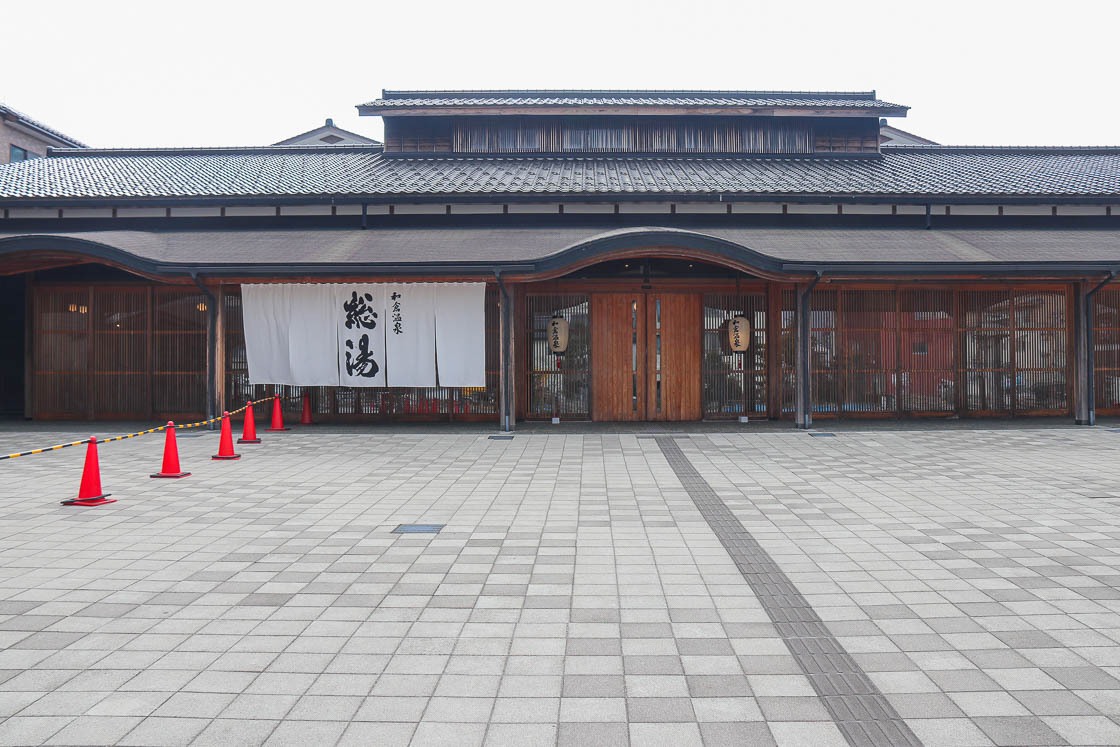
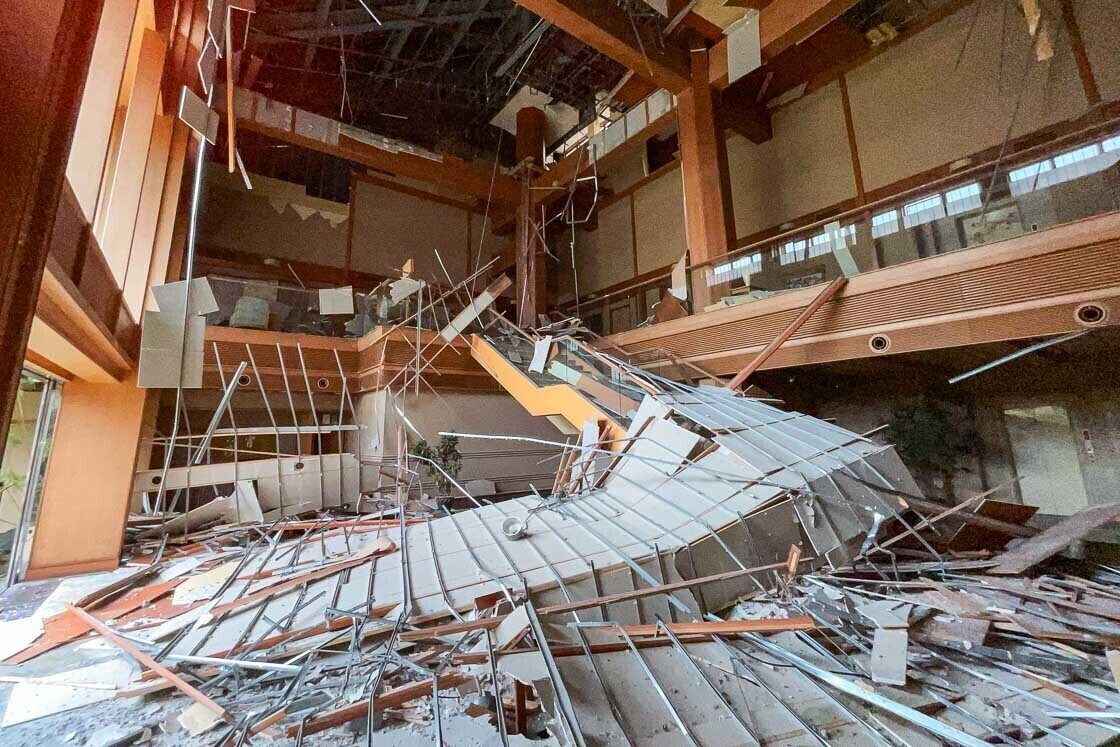
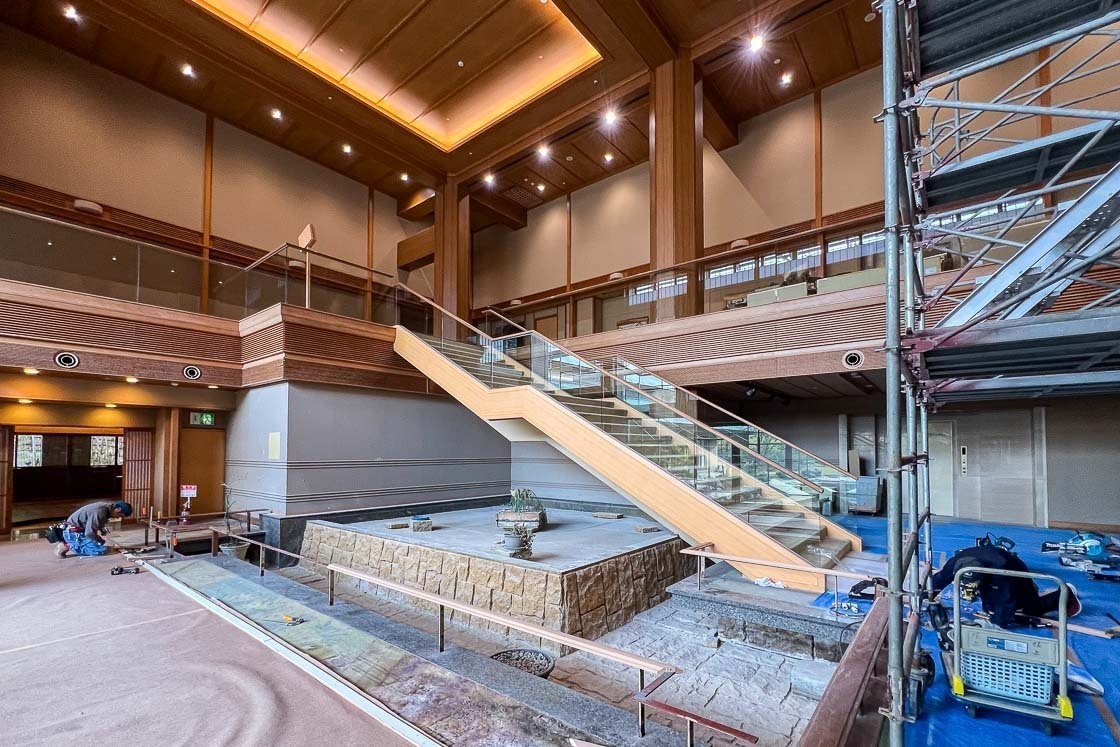
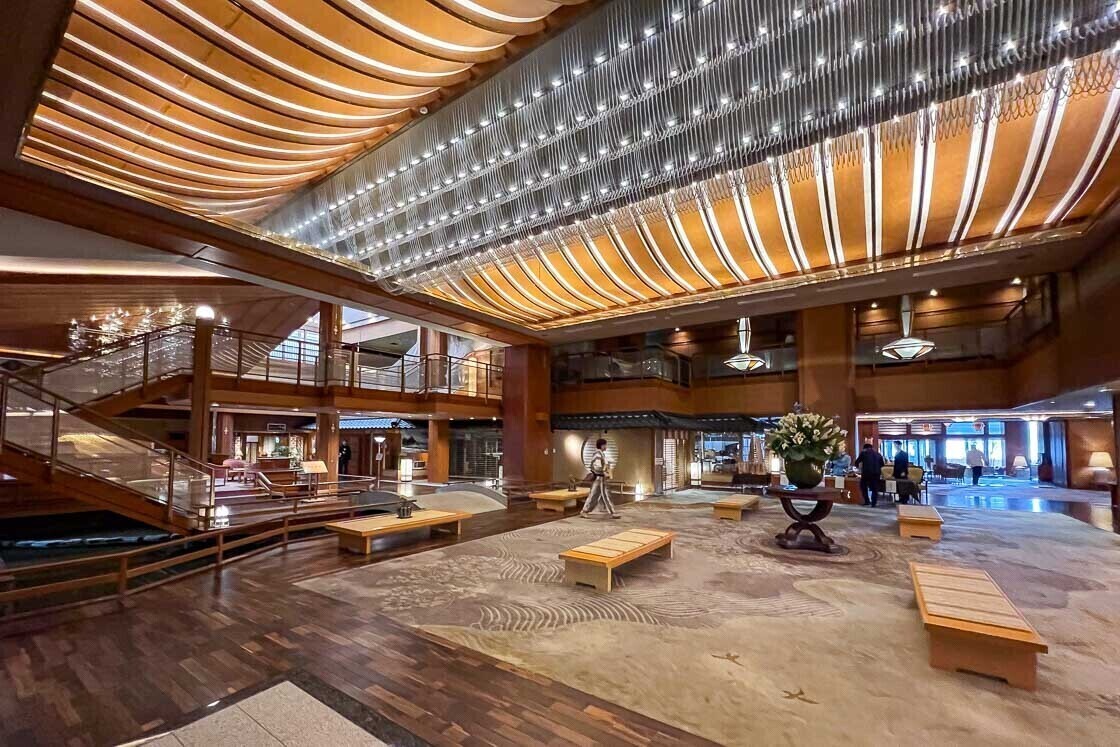
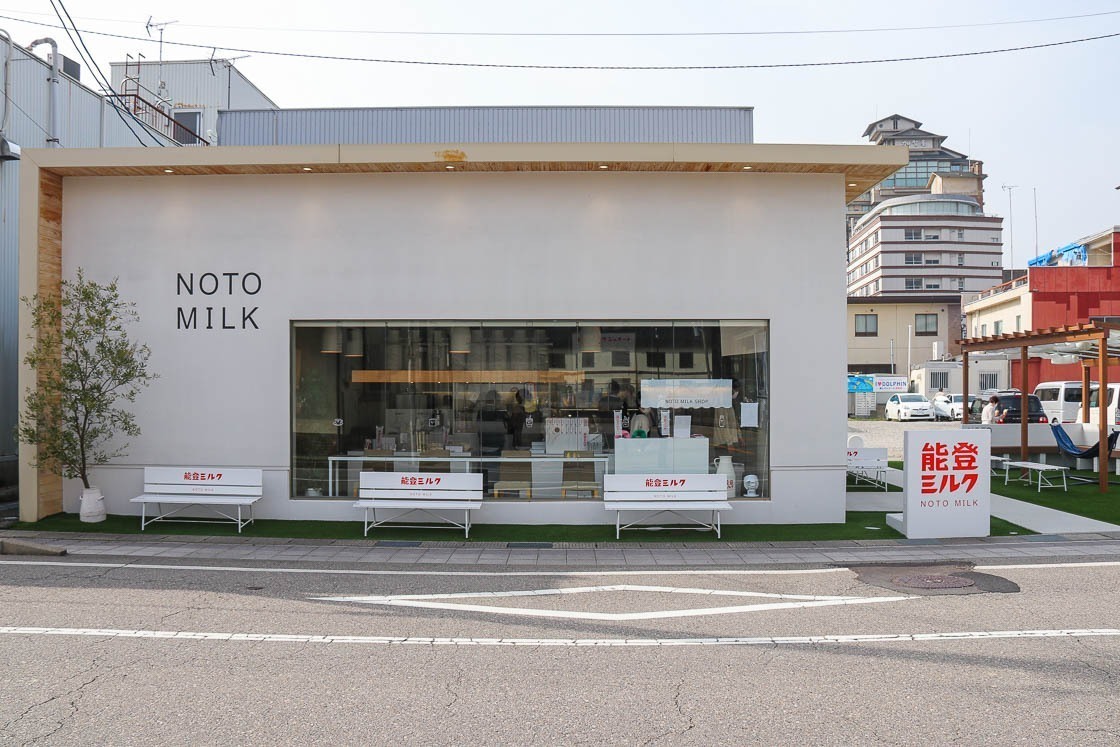
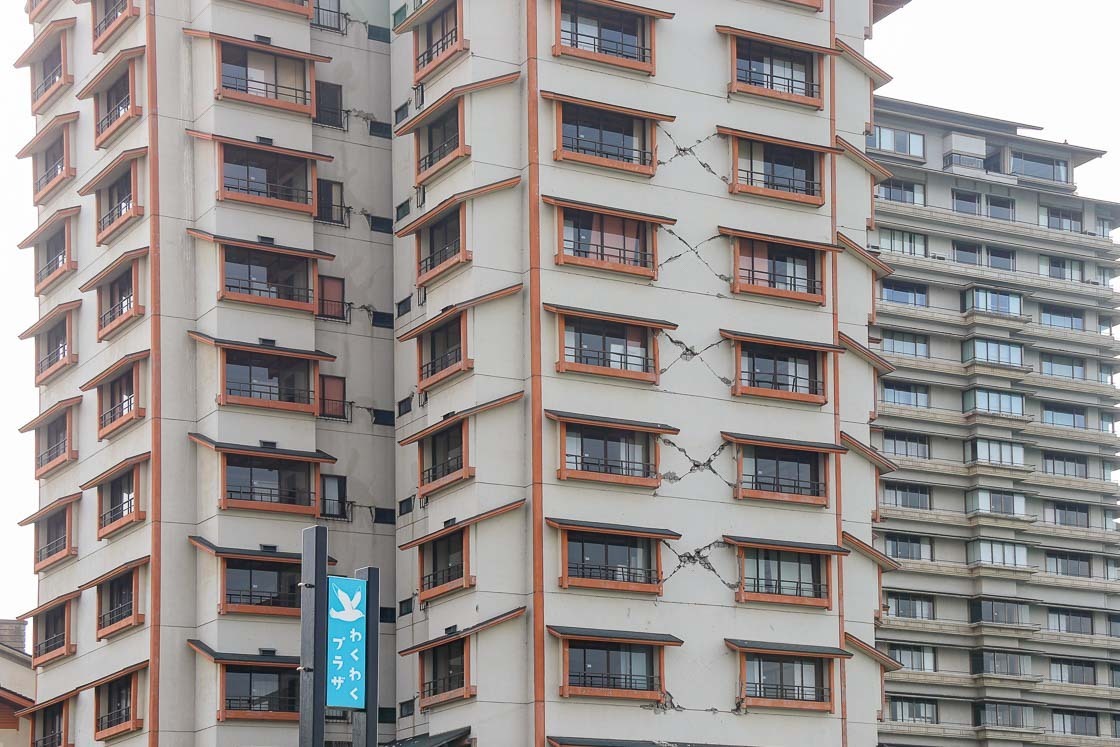
Despite the disasters and rebuilding, the Noto Peninsula is not completely off limits to tourists. In fact, the region's traditional crafts and local cuisine still survive as well as the unwavering warm hospitality of the locals, and it is worth visiting the Noto Peninsula to experience them for yourself. This article is my firsthand report of the 2-day trip I took to the Noto Peninsula one year after the earthquake, in which I experienced what a regular tourist can see and do. Public transport was used in this trip, and details are in the access section below.
Day 1: Nanao City
For many years, Nanao was an important port of call for traditional Japanese merchant ships known as Kitamaebune that connected Osaka with Hokkaido. These ships operated from the mid 18th century till the 19th century, facilitating trade and cultural exchange between northern and western Japan. In Nanao, a shopping street with a history of over 600 years that flourished in the days of the Kitamaebune is lined with a number of historical shops. The earthquake caused considerable damage here, but many of the shops have since reopened for business in temporary buildings.
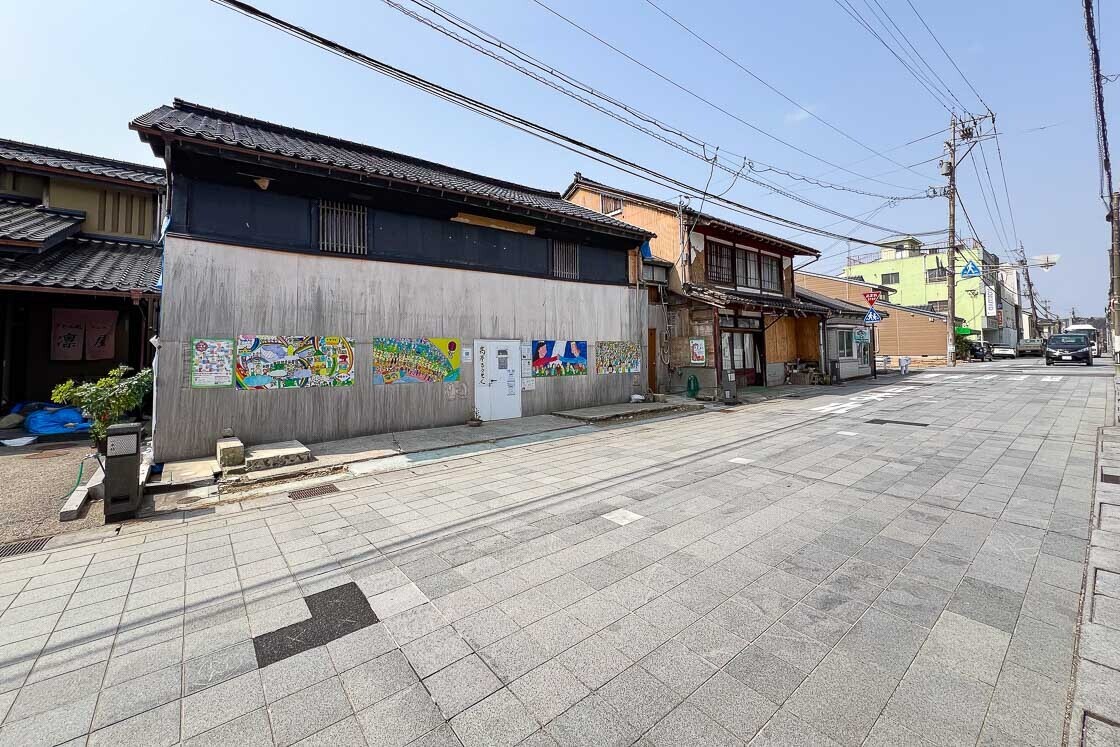
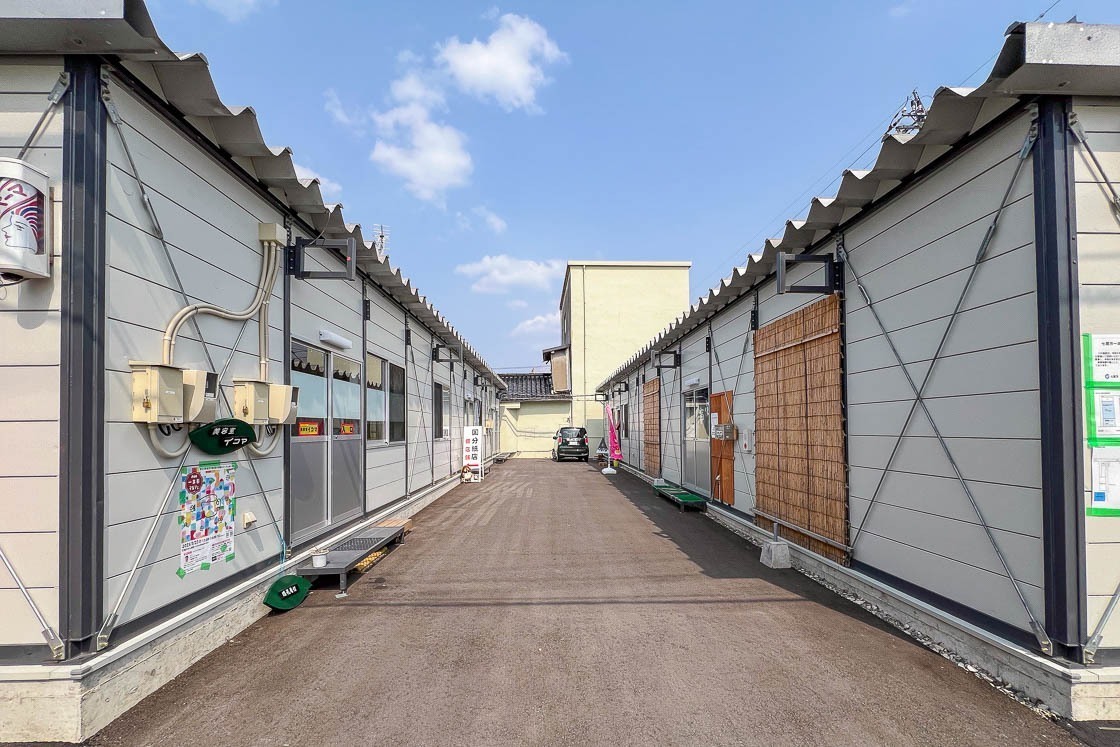
My first stop in the city was Takazawa Candle, the only Japanese candle maker remaining in the Noto Peninsula now. Japanese candles are made with plant wax with wicks made of a type of soft rush wrapped around Japanese washi paper. During the town's heyday as a major trading port, there used to be many candle makers, but as electricity became mainstream, the popularity and need for candles dwindled, and so did the number of candle makers. Candles are typically used as offerings in religious ceremonies and rituals, and common are the flower-design candles taking the place of fresh flowers that were not available in winter in the past.
Candle making or painting activities are available at Takazawa Candle. The activity starts with a brief lesson how Japanese candles are made. My activity was to paint a candle, and while there were an assortment of designs, including some flower ones, to help jog my creative juices, I was free to paint whatever design I wanted. The entire activity takes about an hour excluding drying time. Visitors - like me - who arrive and depart from Nanao Station on the same day can pick up their completed work of art before getting back on the train.
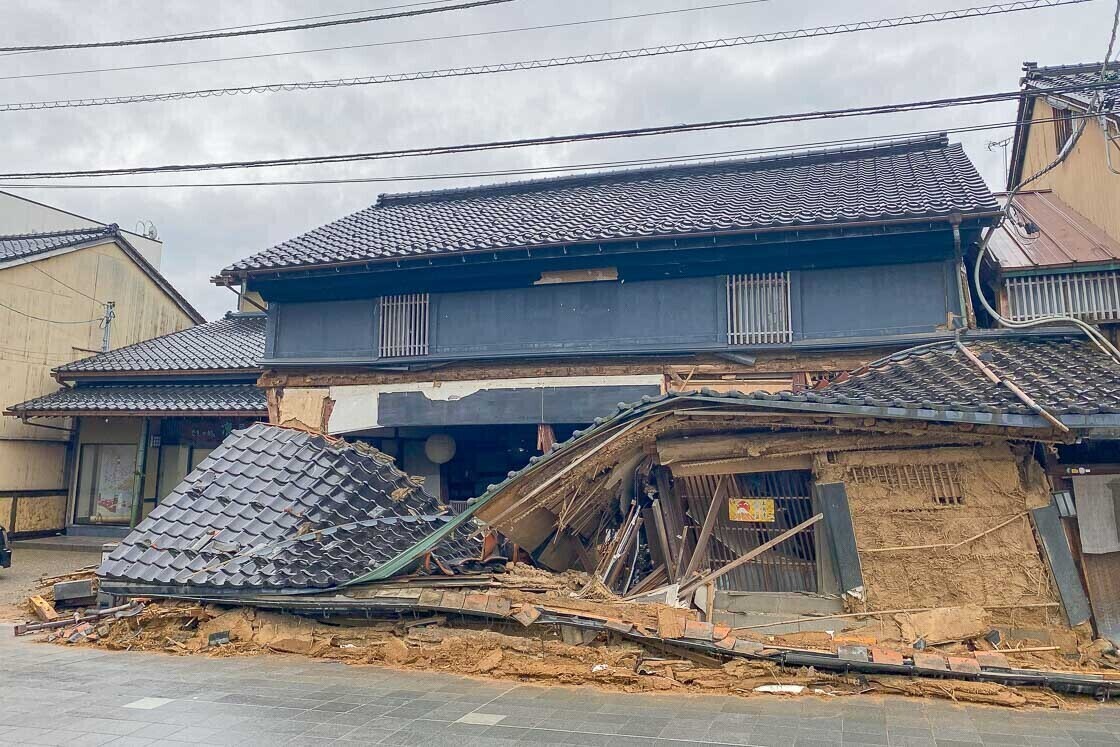
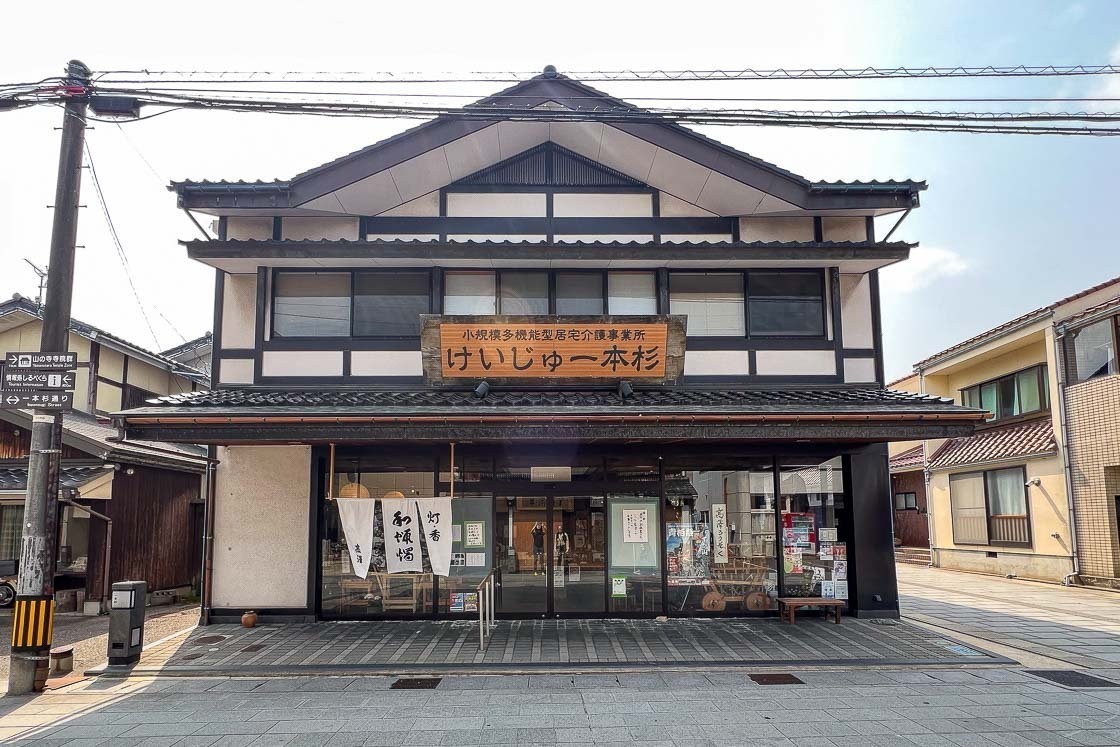
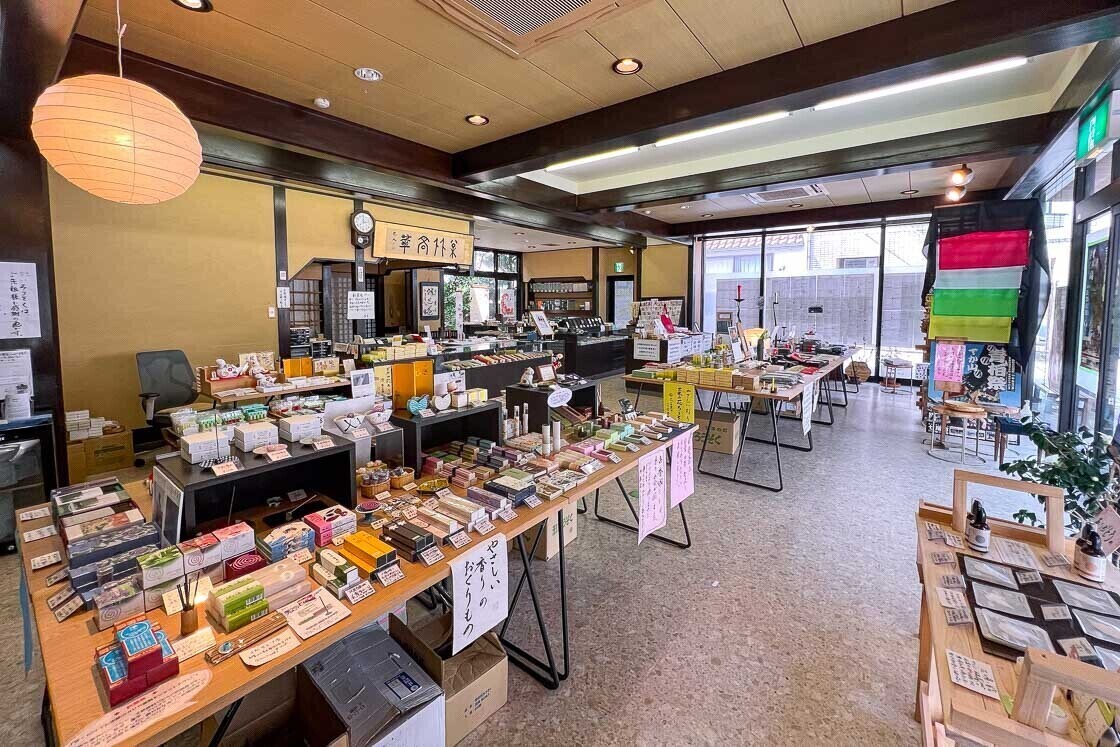
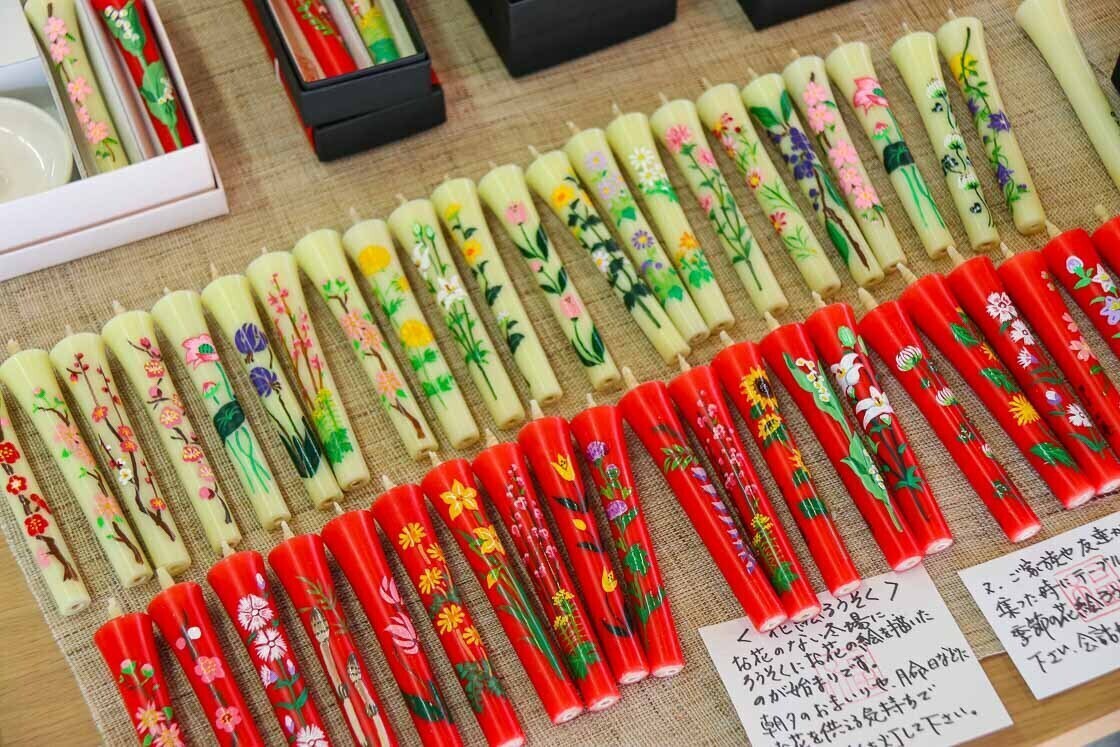
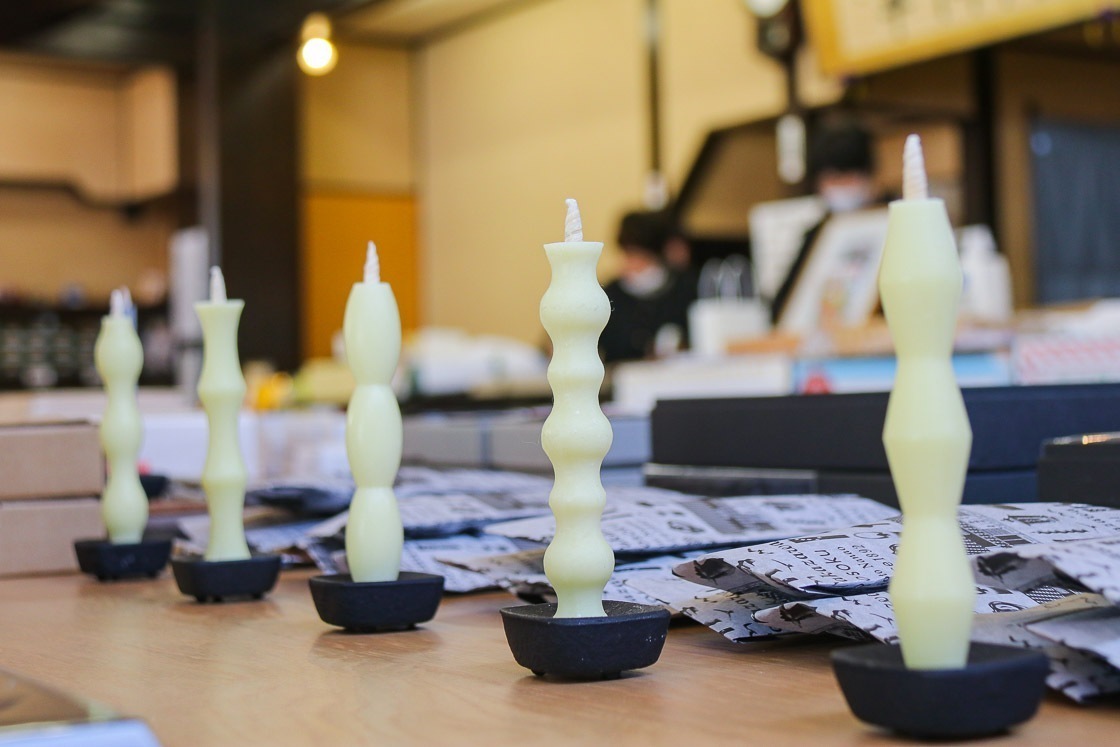
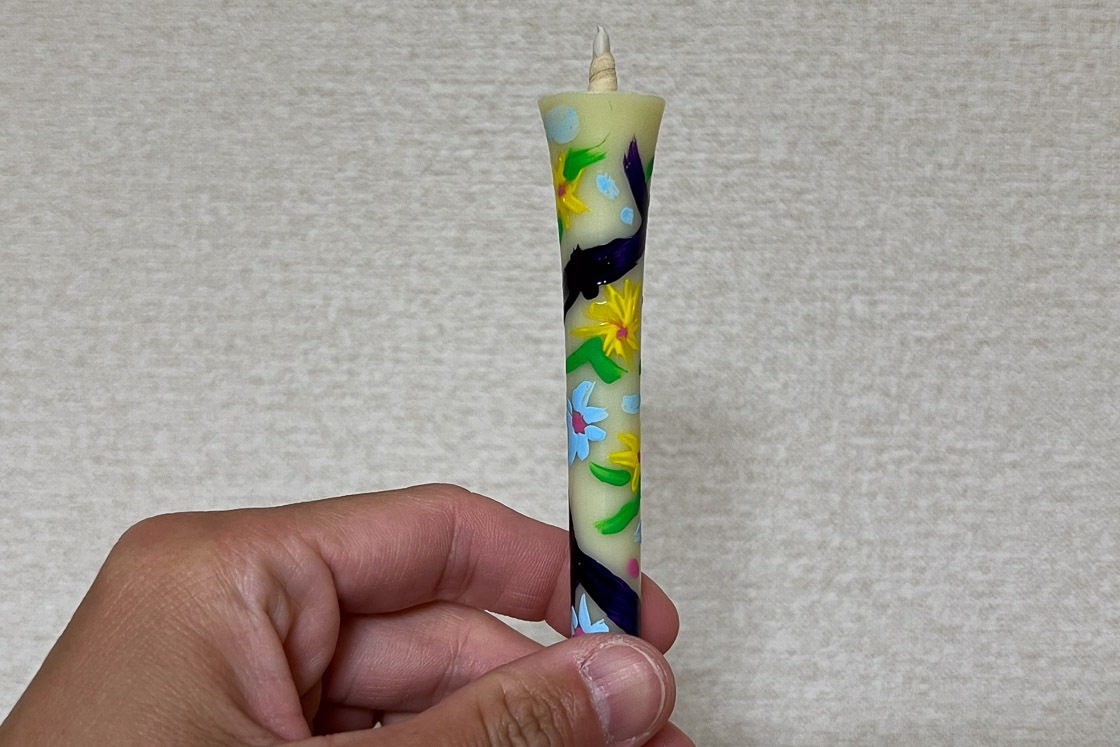
Following that interesting experience with Japanese candles, it was time to head to Noto Shokusai Market along the coast for lunch. Fresh seafood is sold at the market, and dining at a restaurant there is a good way to enjoy the fresh catch. One fun restaurant is Hamayaki Corner, where visitors can order from the menu as well as buy seafood from the market to grill.
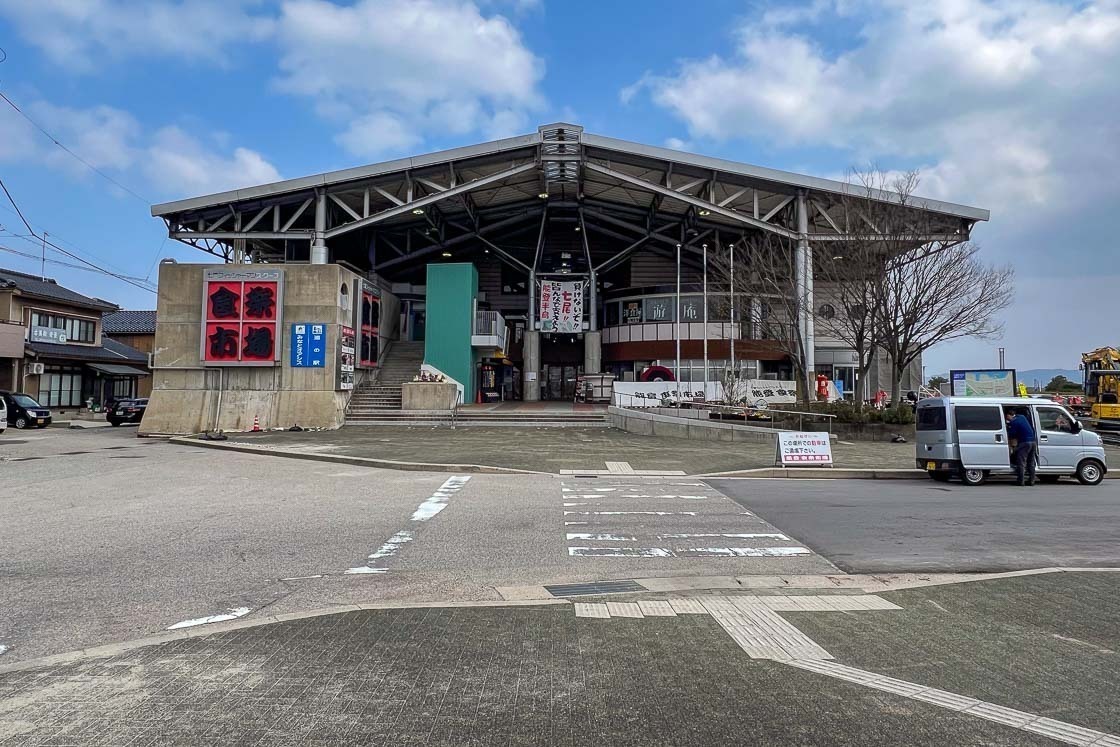
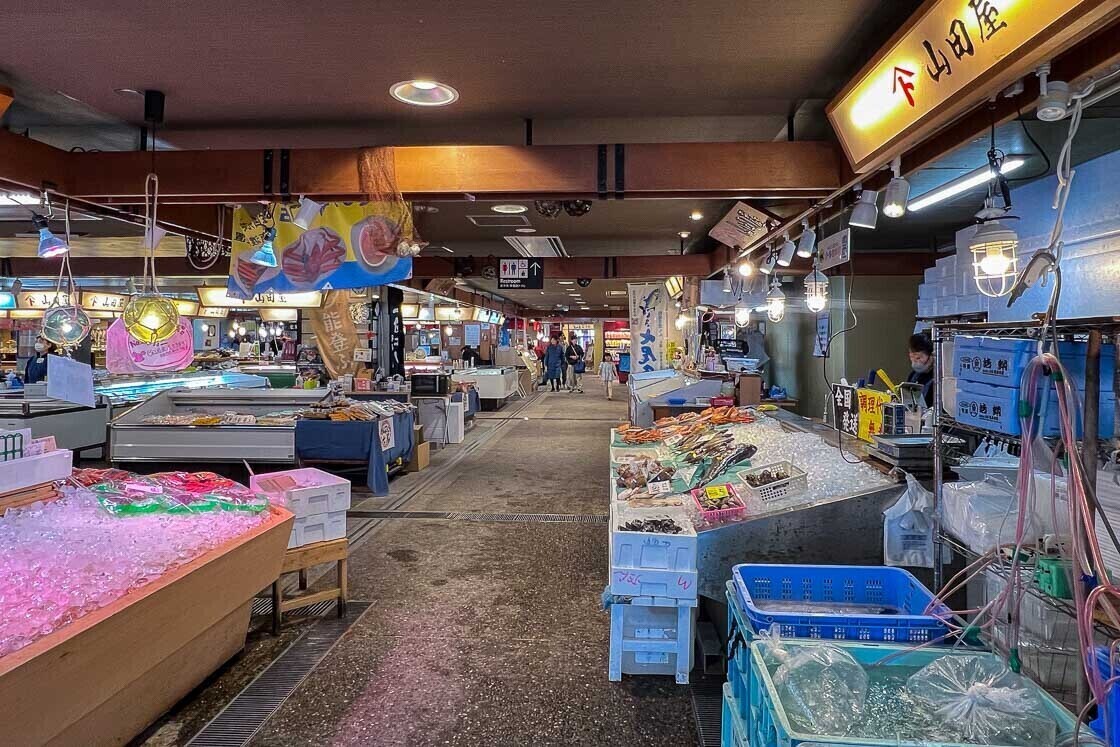
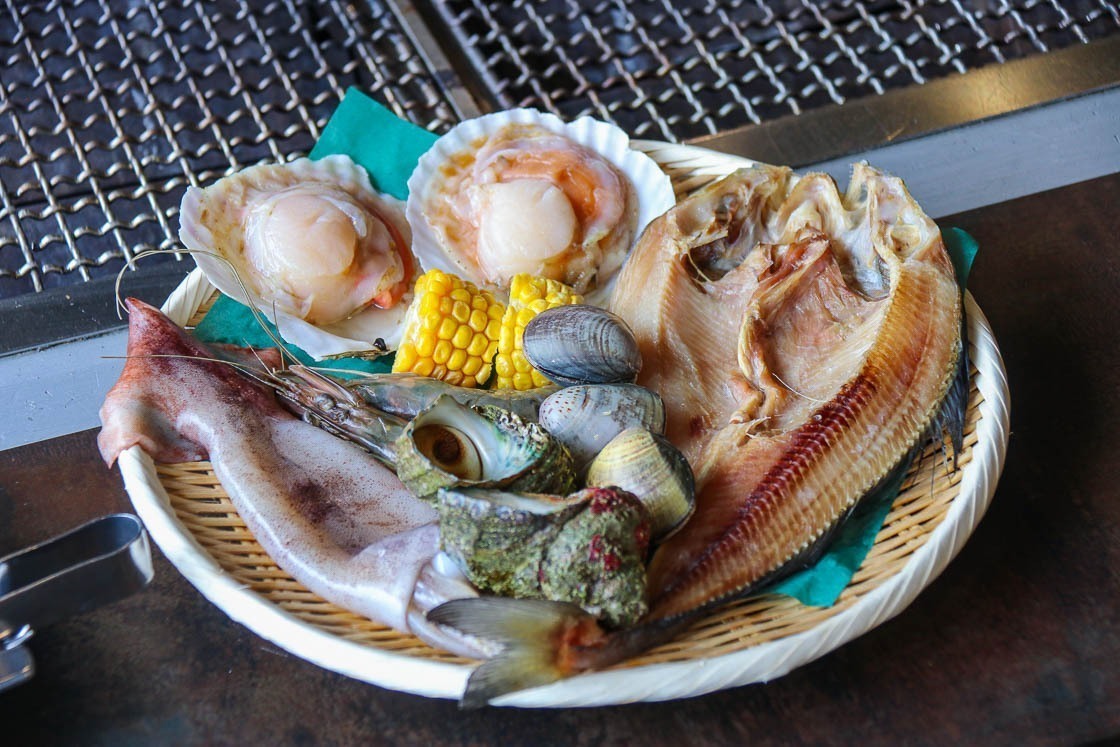
It was then time to walk back to Nanao Station to catch the Noto Railway to Anamizu, its terminal station. The train line travels along the coast, providing some nice scenery of the bay. From Anamizu Station, my homestay host at Shunran no Sato picked me up, and together we made the 20-30 minute drive home together.
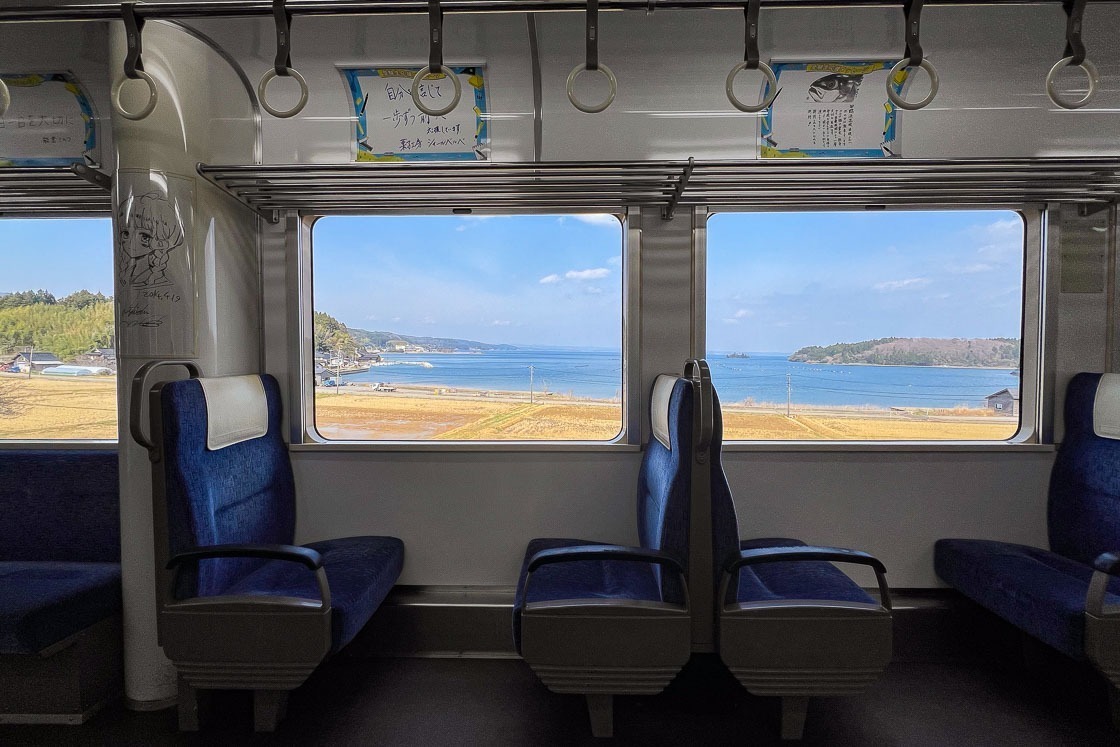
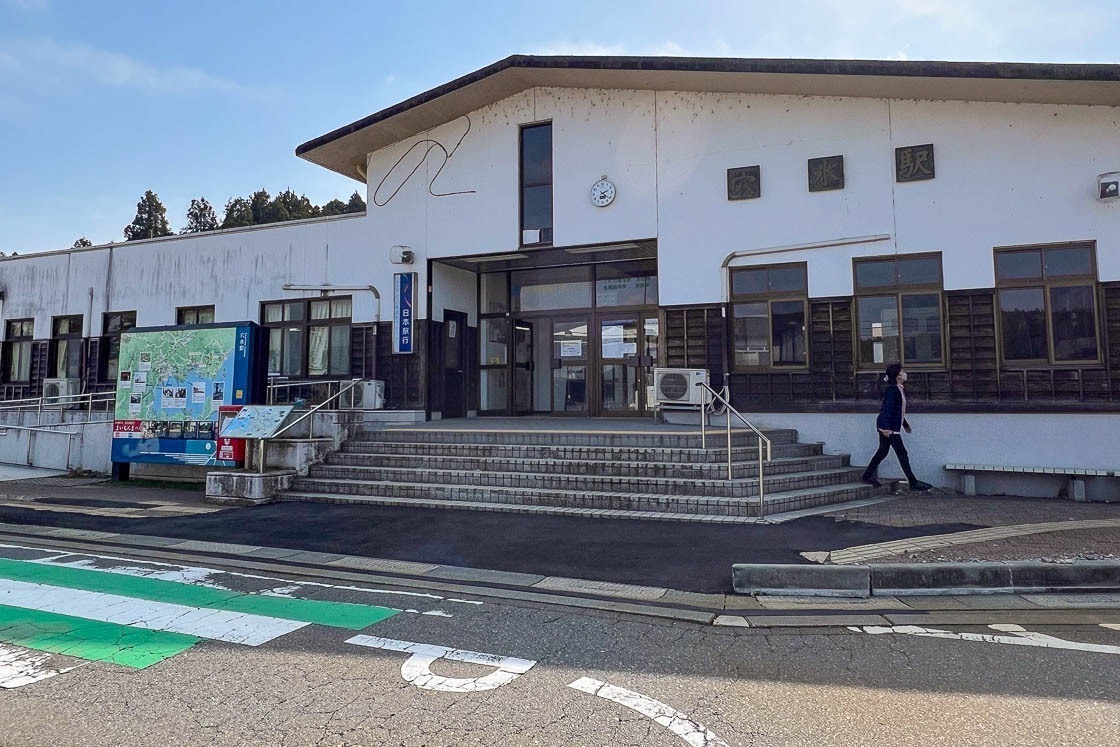
Shunran no Sato is a collection of farmhouses where visitors can have a homestay experience, in which guests usually stay in the same house as their hosts, interact with them and learn about their daily lives in the village. Seasonal activities like wild vegetable picking or farming are also available, which create a hands-on type of stay where guests can be involved in the local lifestyle.
It was an experience for me to stay in a vacant farmhouse with no modern distractions like television sets or game consoles - it was just stars in the night sky and the sound of nature. Dinner was yet another experience, as I was served home cooked dishes containing ingredients grown in the nearby fields in the local Wajima lacquerware dishes, a traditional craft I have planned for the following day.
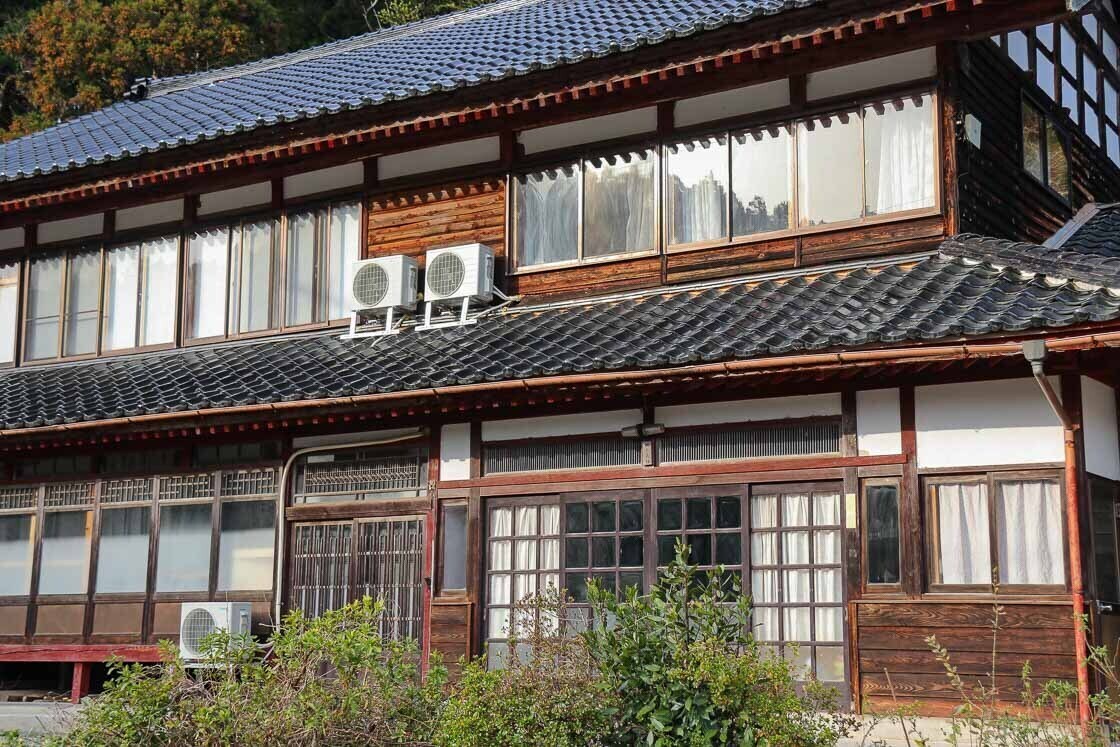
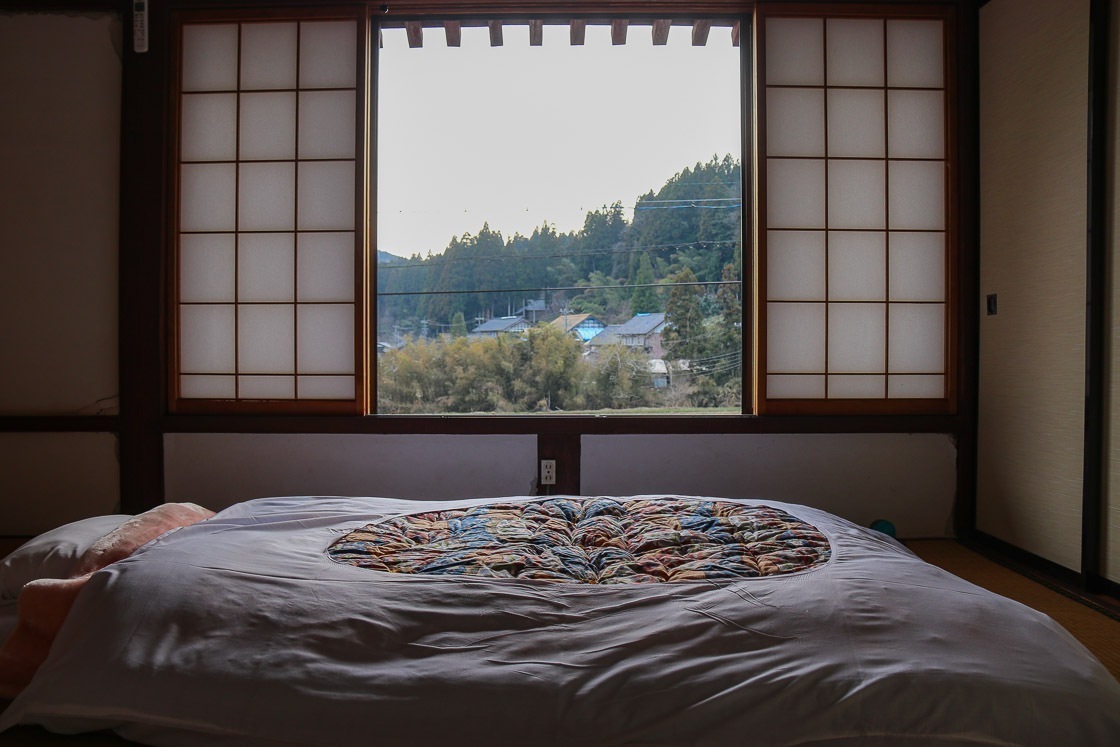
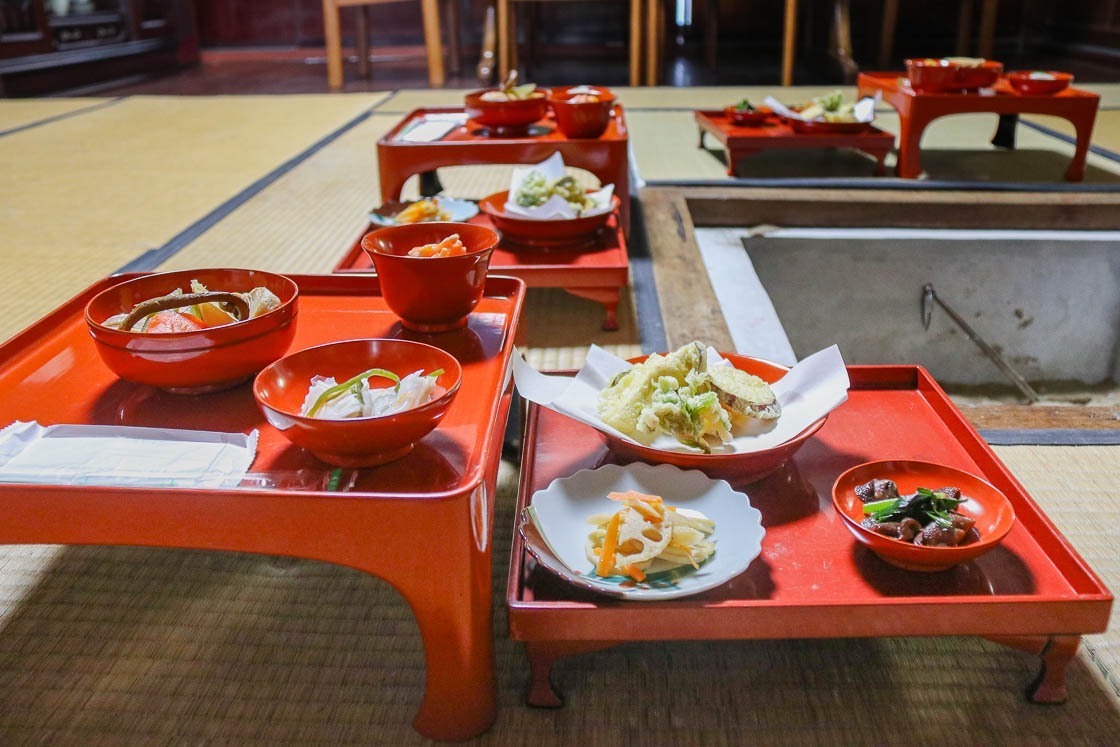
Day 2: Wajima City
After breakfast, I bid farewell to my hosts at Anamizu Station, and took the bus to Wajima. The city was one of the hardest-hit by the earthquake on New Year's Day in 2024, which toppled many buildings and caused a large fire that destroyed a considerable part of the city center, including the site of the famous local morning market. Then, just nine months later, torrential rain brought about widespread flooding and landslides causing further destruction to parts of the city.
Being on the ground allowed me to see the situation firsthand. It was clear upon arrival that there were a lot of temporary homes and construction work going on in Wajima, and the locals were going about living their everyday lives in this new normal.
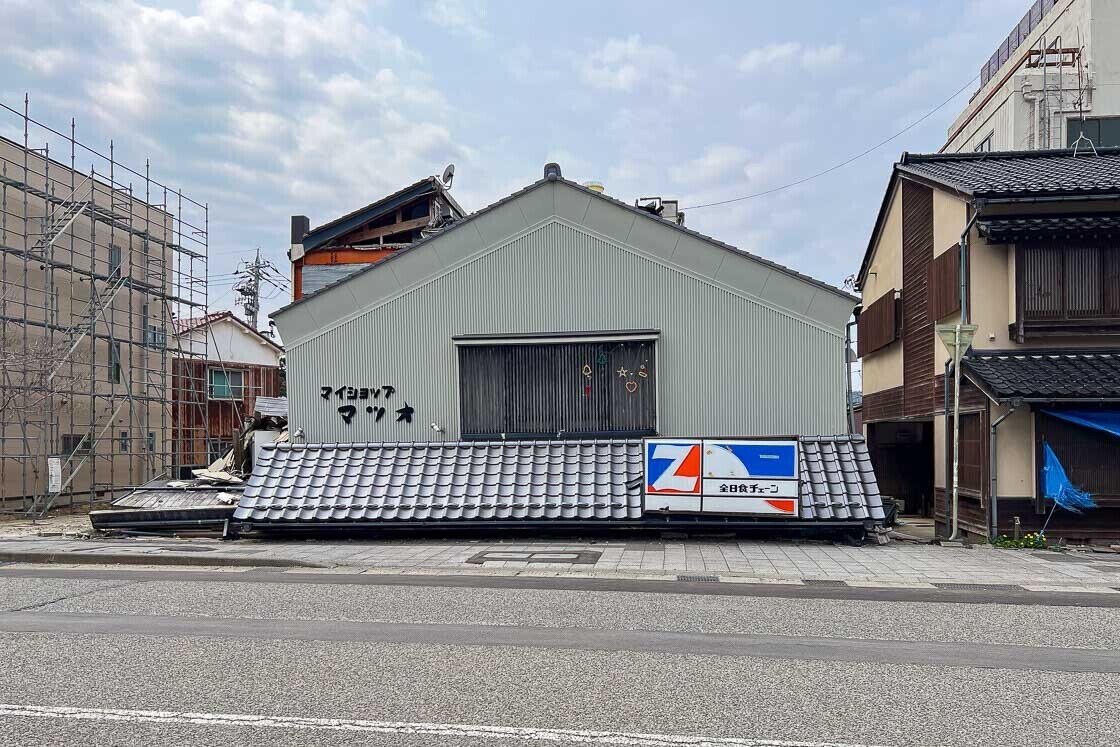
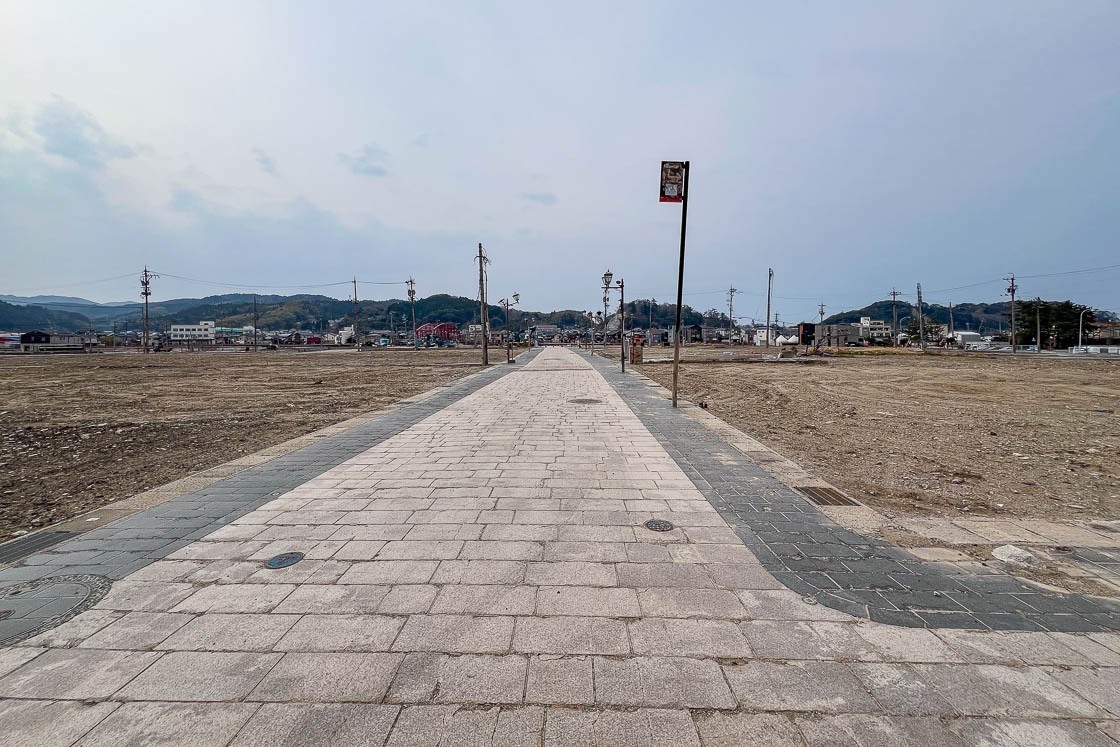
Electric-assist bicycles available for rent from the Wajima Tourist Information Center, located inside Michinoeki Wajima where the bus stops. Interestingly, the train line that stop at Anamizu used to continue to Wajima before being discontinued in 2001. A section of the train station and tracks have been preserved as a memory of that past.
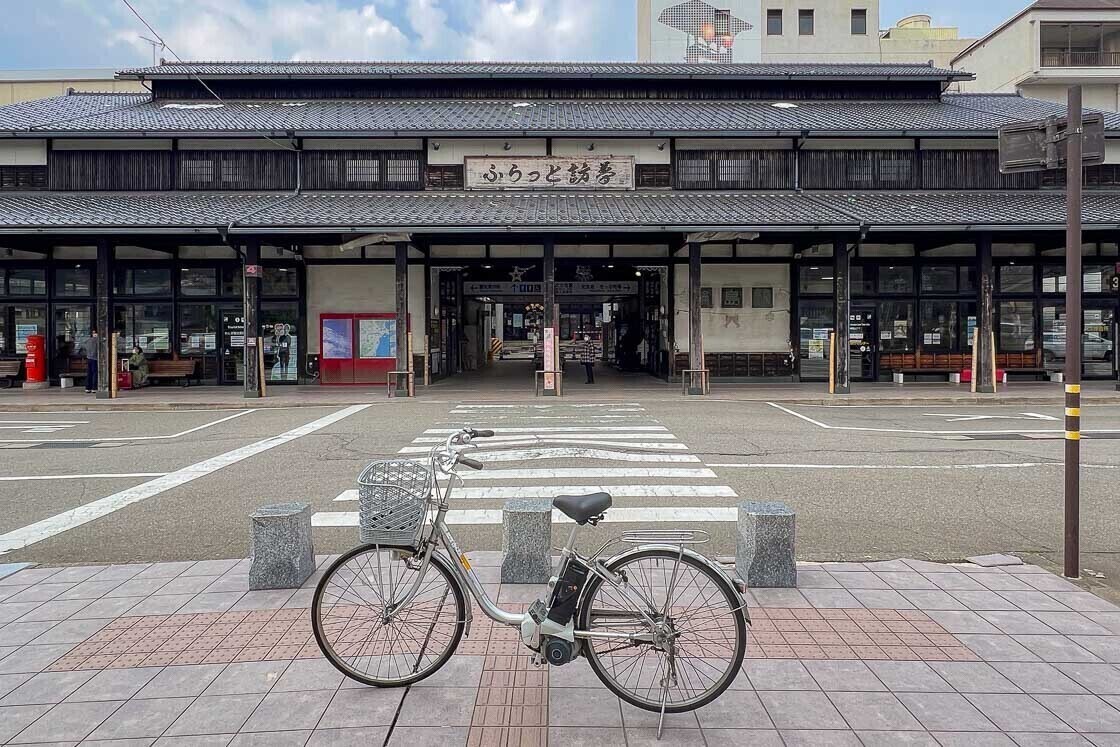
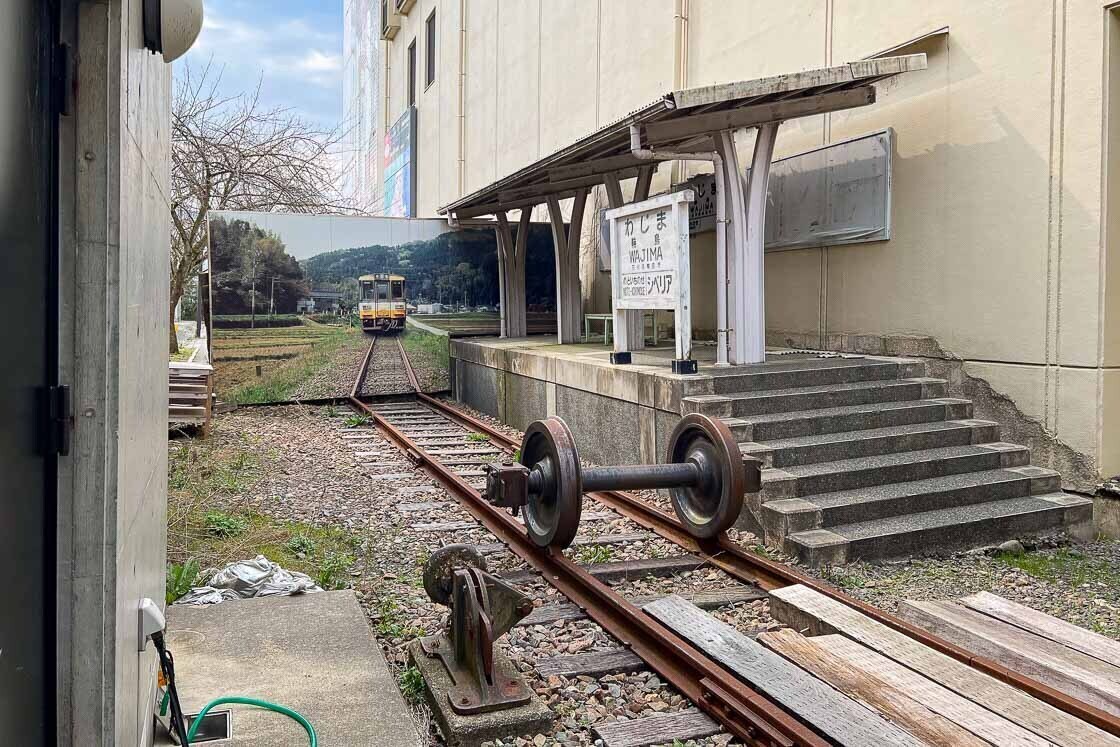
My first stop in Wajima was the Power City Wai Plaza, a shopping mall that currently hosts the famed Wajima Morning Market. Originally located near the waterfront, the morning market is one of the icons and attractions of Wajima featuring over 150 shops selling local goods and produce. However, all of that was destroyed by the earthquake and ensuing fire, and the market now has a temporary home at the Wai Plaza with approximately 30 shops.
There was a lively atmosphere at the morning market as stall holders called out and engaged with visitors. I was touched by the warmth and hospitality of the locals, who were excited and passionate about their handmade wares.
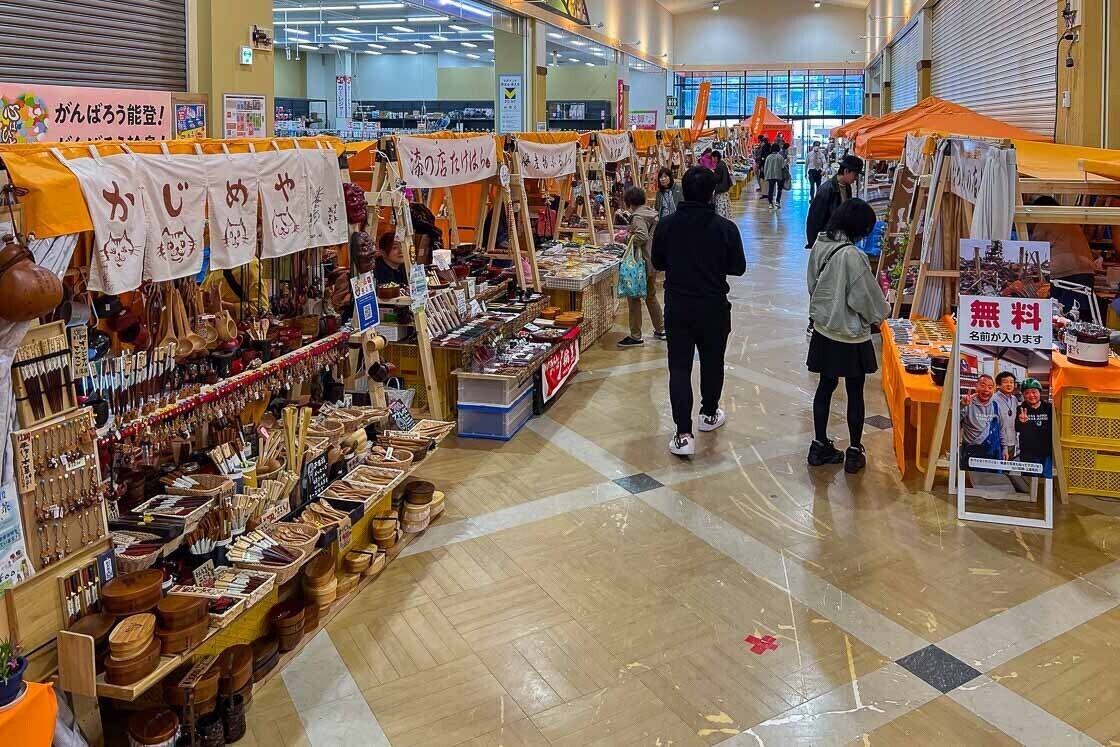
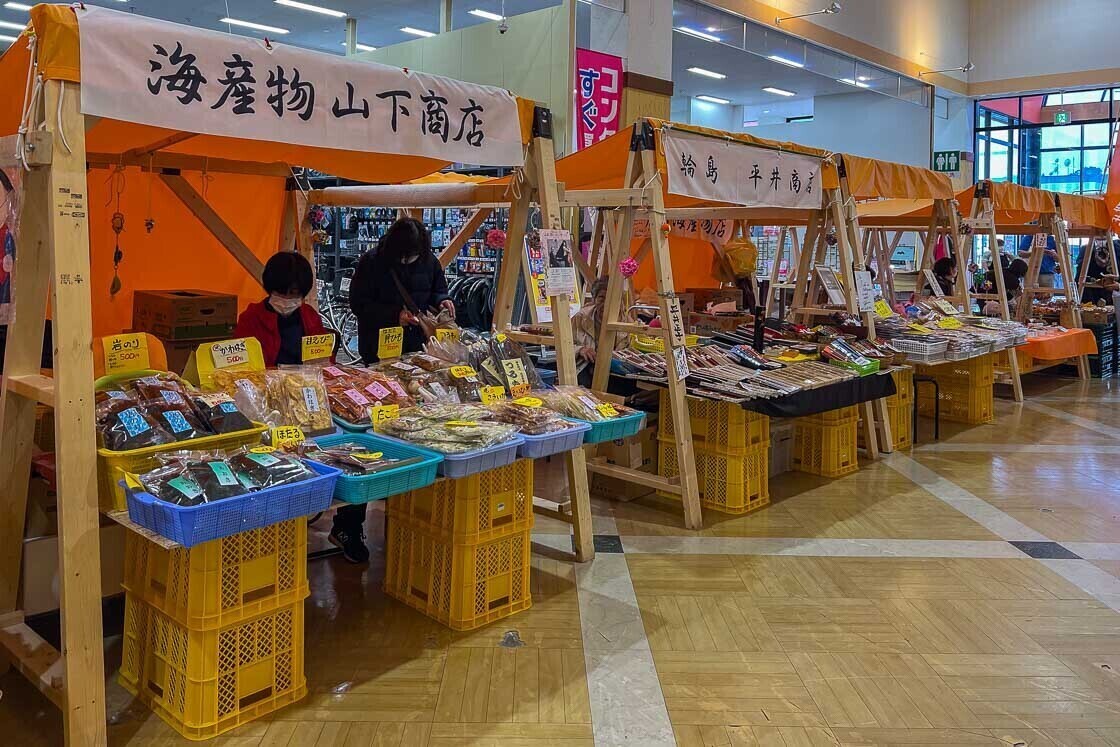
Moving on, I made my way to the Wajima Kobo Nagaya a facility made up of several long houses where visitors can see and/or participate in hands-on activities like customizing Wajima lacquerware chopsticks with gold dust or gold foil. There was a lacquerware artisan at work when I arrived, and he explained the process of making Wajima-nuri.
The process of creating traditional Wajima lacquerware has over a hundred steps. A simple piece of wood gets shaped, treated, sanded, painted multiple times with lacquer, and decorated, before it can be sold. With these multiple steps and the time taken for Japanese lacquer to dry, it takes about six months to create a simple bowl from start to finish. This process results in not only a beautiful product, but one that is longlasting and durable.
In addition to explaining about his role in the multi-step lacquerware production process, my artisan also spoke about how the disasters affected him - his original home was flattened by the quake, then his assigned temporary home was flooded. In spite of his double loss, he was still positive and said that being at work at the time of both disasters was what saved his life. His skills of the trade saved him physically, and because of that, gave him renewed purpose for life.
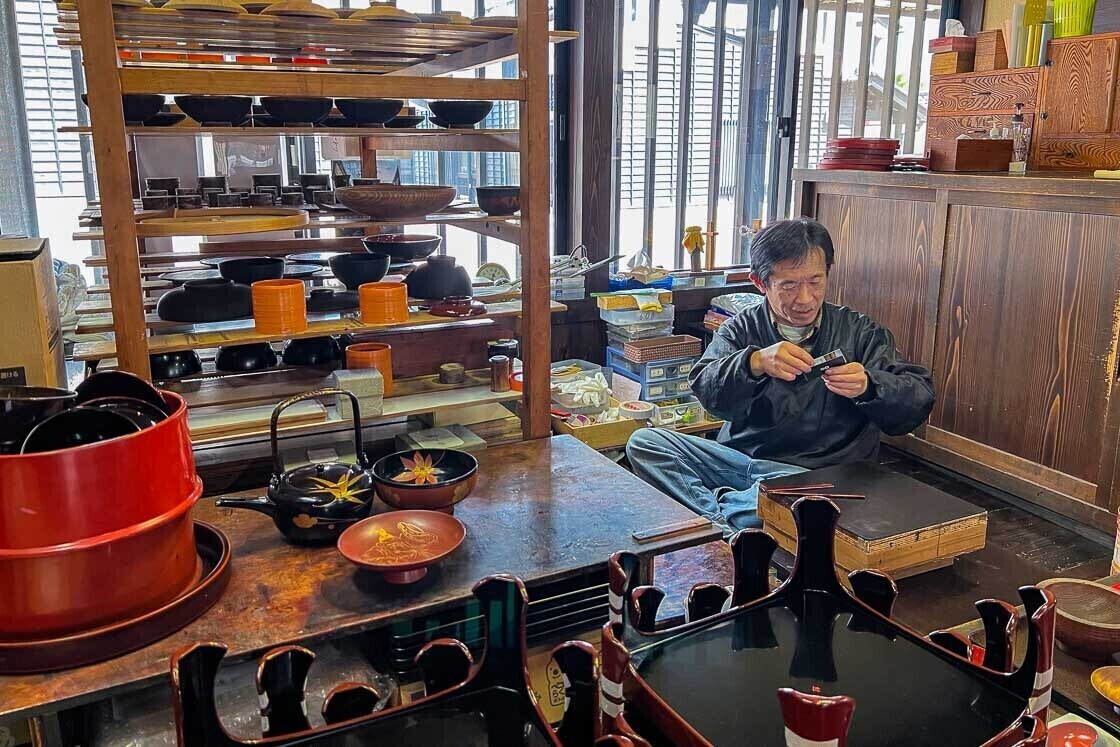
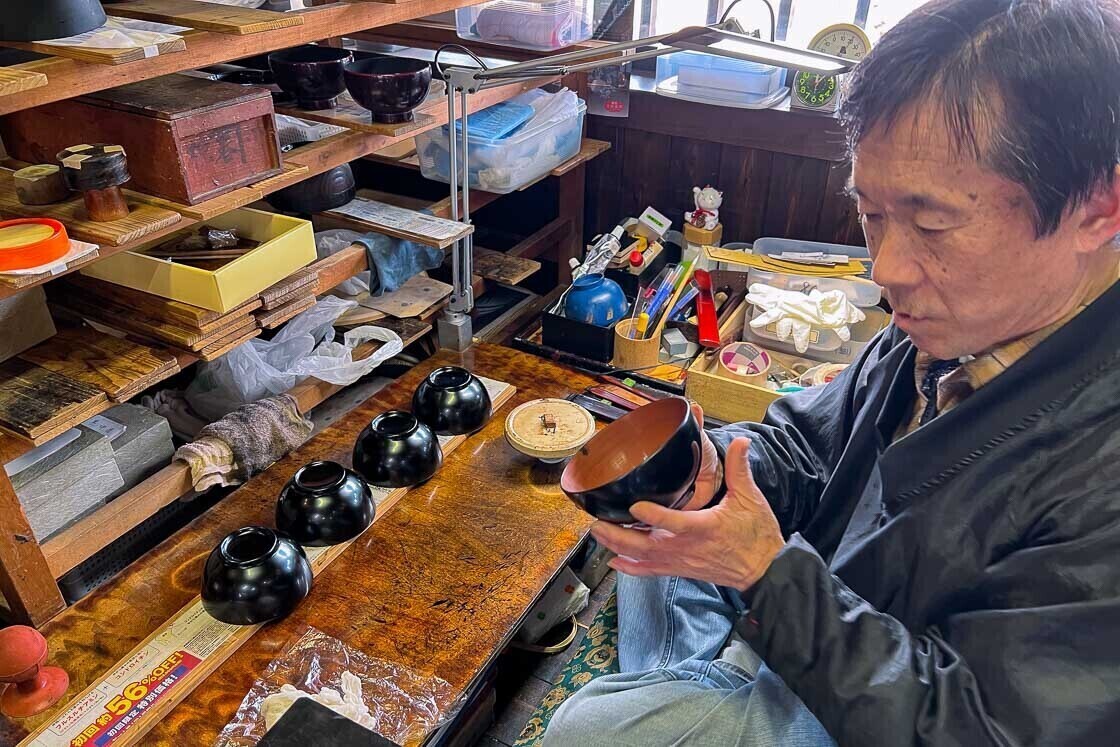
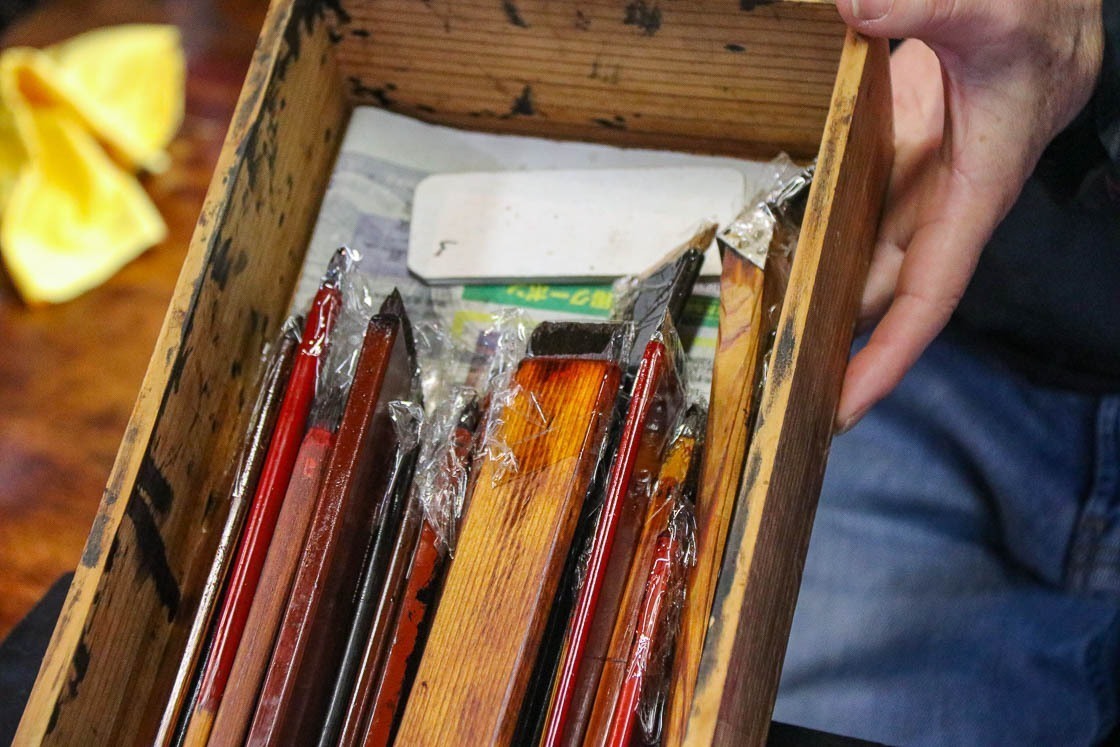
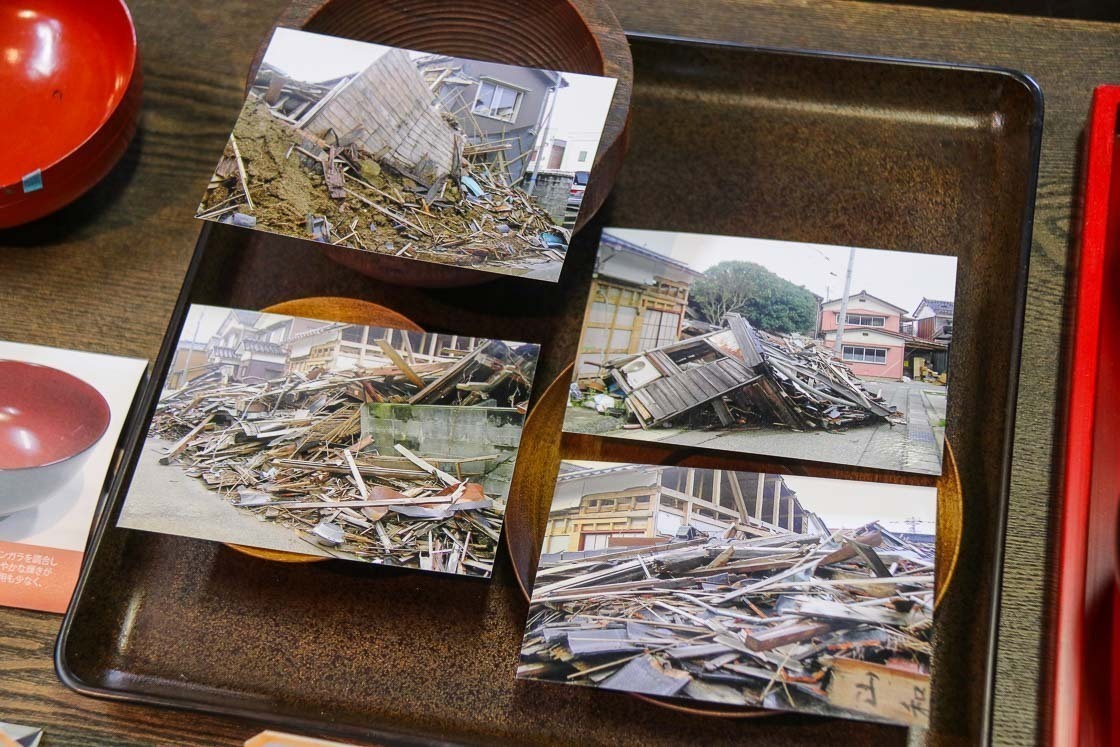
After that inspiring visit, I headed to Mebuki, a restaurant opened by a Michelin-starred chef whose restaurant was destroyed in the earthquake. The concept behind the restaurant is to act as a place where people, including restaurateurs who were unable to continue their businesses, can gather and have fun. Mebuki serves a wider variety of cuisines including French and Japanese dishes containing seasonal Noto ingredients.
I picked one of the daily specials, and my sashimi set lunch of seasonal raw fish from the Noto Region appeared in no time. The best things in life are indeed the ones close to you, and in this case, local ingredients that did not travel far to get to my plate. I was very impressed with the quality and flavour for the price I paid!
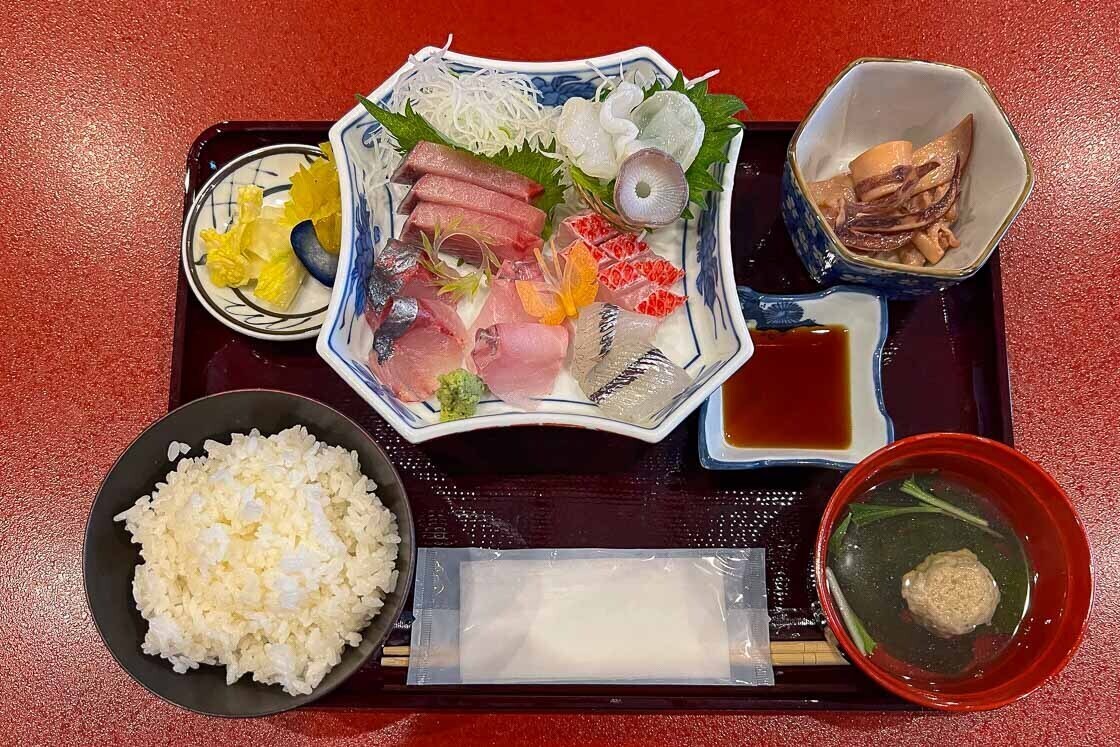
It was a good lunch to close my trip to the Noto Peninsula. Having visited barely one half of the peninsula, I was touched by the strength of those I met who suffered through the disasters. It will be years before things go back to what they were before, but what I know is the warmth and hospitality of the locals is the reason why I want to visit the Noto Peninsula again.
Access
The Noto Peninsula can be accessed by train from Kanazawa Station (3 hours from Tokyo on the Hokuriku Shinkansen) or by plane from Haneda Airport (two flights daily to Noto Satoyama Airport) in central Tokyo.
Kanazawa Station to Nanao Station
Take the JR Nanao Line and get off at Nanao Station (100 minutes). The spots visited in Nanao are within walking distance from the station.
Approximate walking times
- Nanao Station to Takazawa candle shop: 10 minutes
- Takazawa candle shop to Noto Shokusai Market: 10 minutes
- Noto Shokusai Market to Nanao Station: 15 minutes
Nanao Station to Shunran no Sato
Take the Noto Railway from Nanao Station to the terminus, Anamizu Station (45 minutes). The hosts from Shunran no Sato can pick guests up from Anamizu Station, and arranging for a pick up in advance would be appreciated. It takes about 30 minutes to drive from Anamizu Station to Shunran no Sato.
Shunran no Sato to Wajima
Take a bus from Anamizu Station and get off at Wajima Station (50 minutes, one bus every 2-3 hours). Electric assisted rental bicycles are available from the tourist information counter at Wajima Station. The distance of the spots visited in Wajima are not far, and it is possible to walk between them as well.
Approximate cycling times
- Wajima Station to Power City Wai Plaza (Wajima morning market): 5 minutes
- Power City Wai Plaza to Wajima Art Studio Nagaya: 10 minutes
- Wajima Art Studio Nagaya to Mebuki: 5 minutes
- Mebuki to Wajima Station: 10 minutes
Useful links
- Takazawa Candle - Official website.
- Shunran no Sato - Official website.
- Wajima Kobo Nagaya - Official website.
